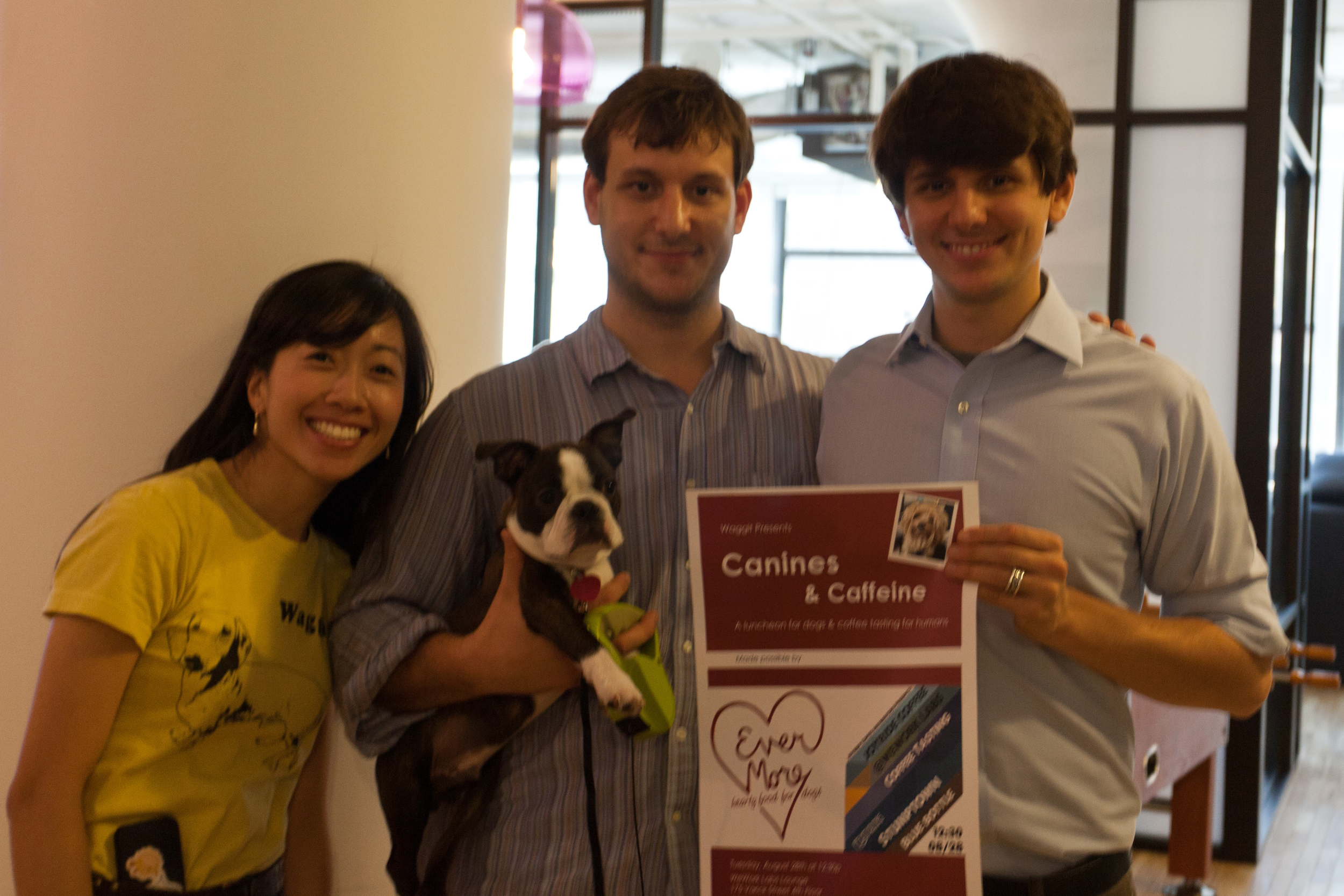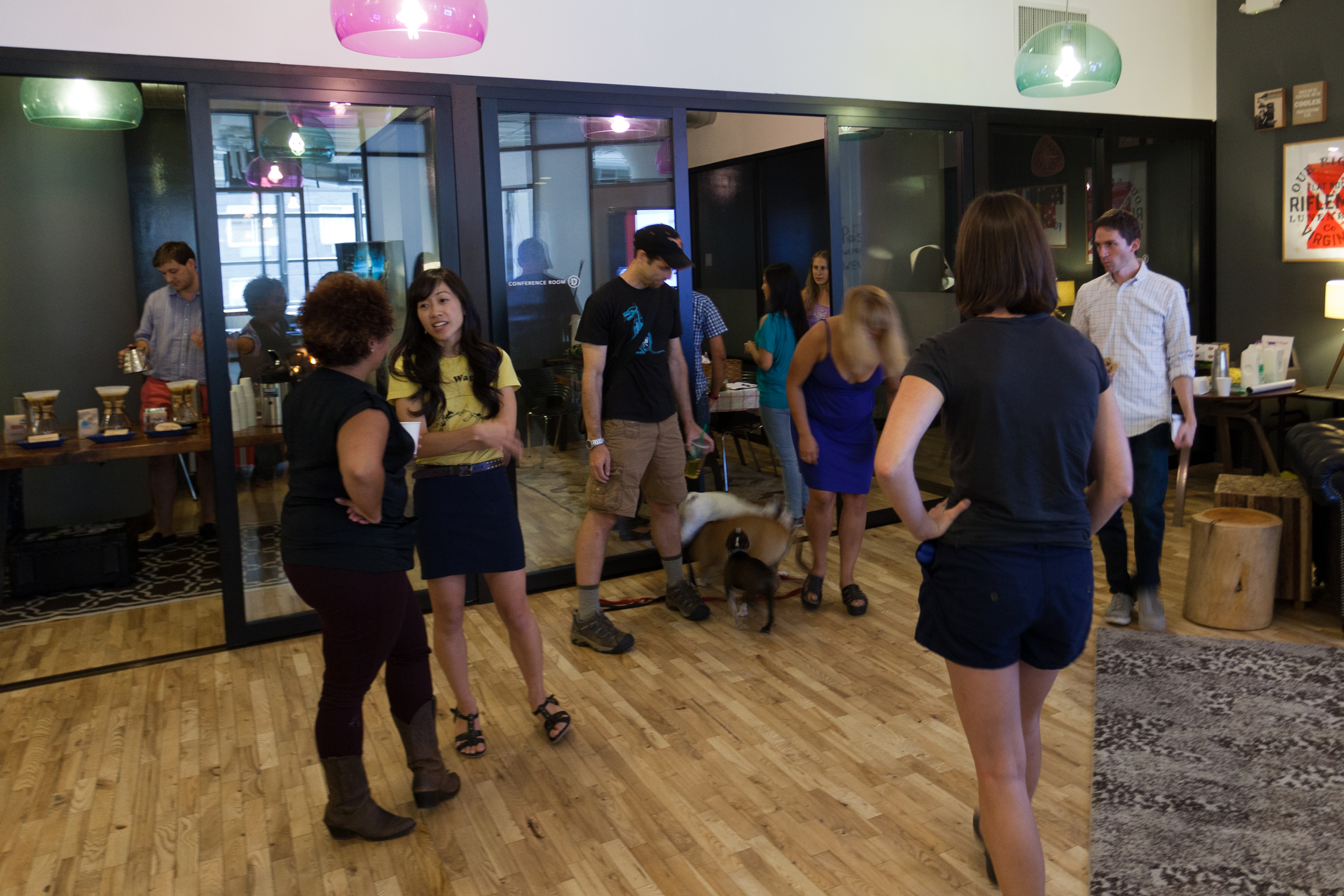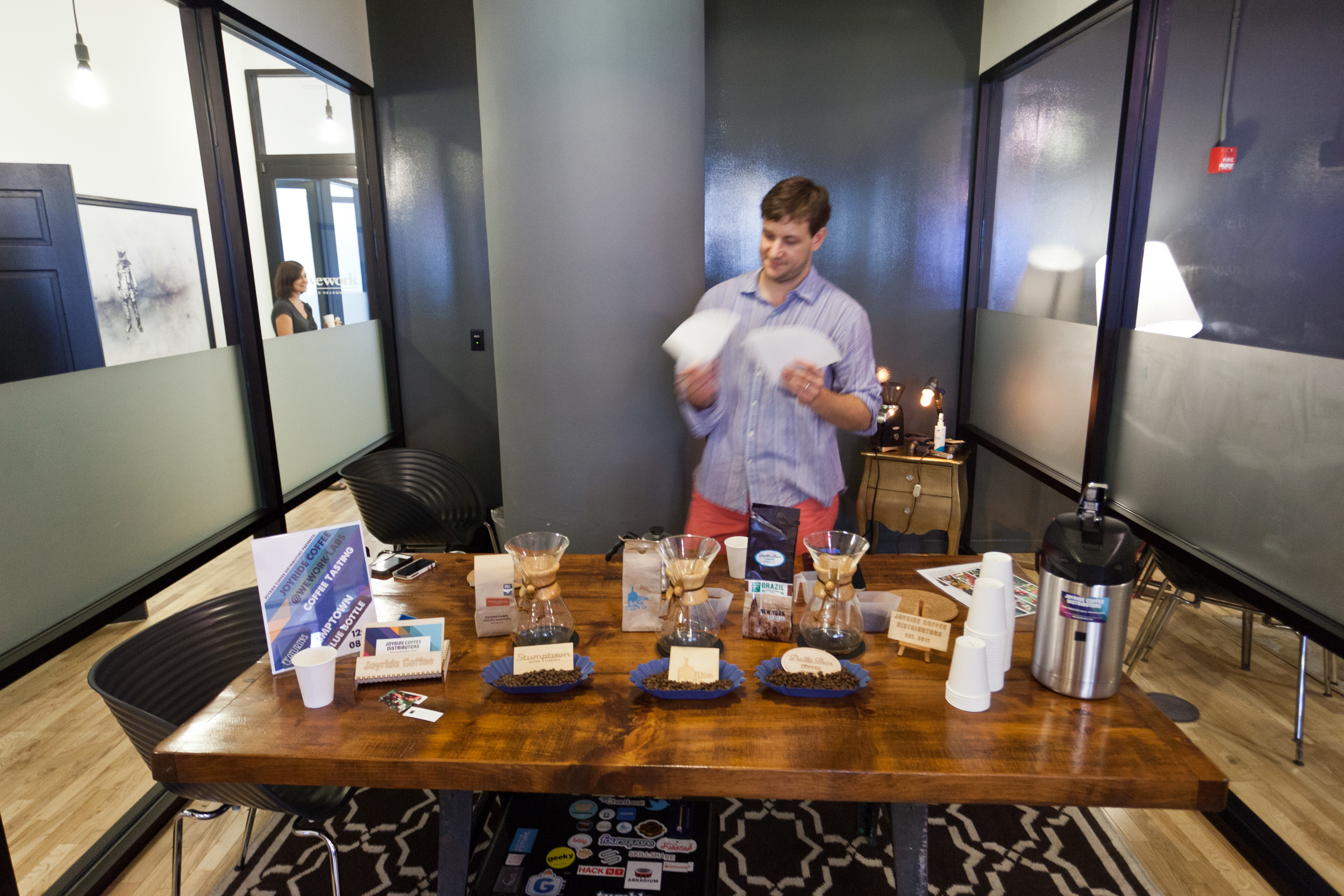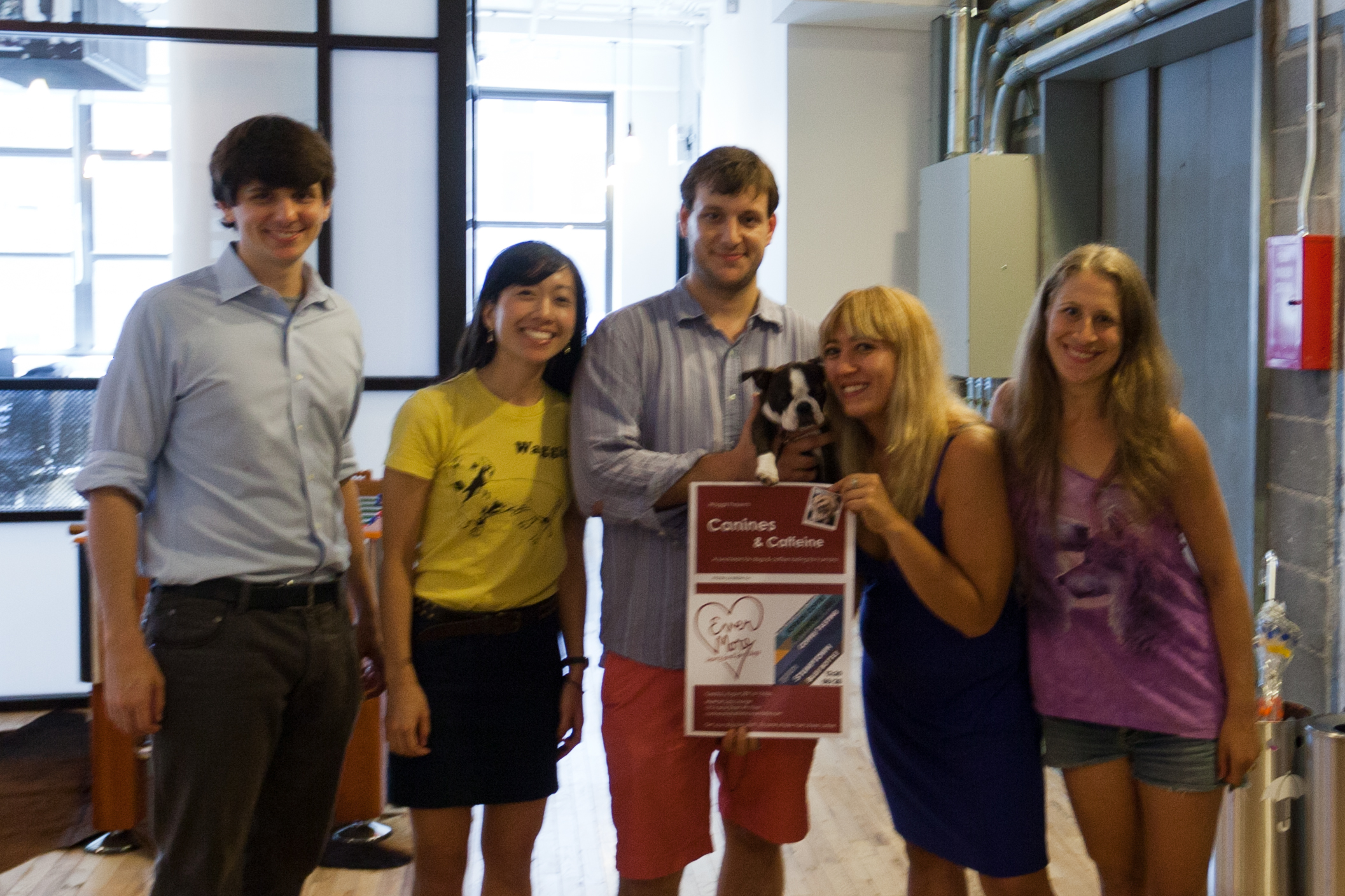The way we like to introduce potential customers to our products is through a free in-office tasting.
But what exactly a tasting is, is a bit of a mystery to most people. The norm in the coffee industry is a cupping, but to be honest, while these give the clearest understanding of a coffee, they don't really give people a taste of how their coffee will go down on a day-to-day basis. So then what is a tasting? For this, I think an FAQ format is best.
What Coffee will we try at a tasting? How will it be prepared?
In terms of the coffee, a tasting will consist of three different roasts; one from each of our roasters. We will usually have a Latin, an African and a blend. For example, recently we have been doing a Dallis Brothers Sertao Yellow Bourbon from Brazil, a Stumptown Ethiopian Mordecofe and a Blue Bottle Bella Donovan blend. These coffees are prepared on a Chemex pour-over. We use Chemexes because they allow us to get a very clean cup, and they mimic the way that coffee is brewed when prepared with our office equipment. In the summer months, we also bring a sample of our in-house cold brew. Cold-brew carries all the potency of coffee, with a fraction of the acidity. We'll give tasting notes on the coffees, and describe what traits makes them special, such as different single-origin coffees, single-varietal coffees and Direct trade coffee sourcing. We'll also go into the process of how coffee goes from being a little red cherry on a plant in Latin America, to a delicious brown liquid in an office in New York.
What Equipment options do you offer?
We offer coffee equipment for offices from ten to a thousand employees. We have options that are direct plumbed, and ones that are filled by carafe. You can look at our coffee equipment options here. We also offer water cooler solutions for offices of all sizes.
What do we need on our End?
Our baristas will come fully prepared. All we need is a water source, a table and two outlets.
How long is a tasting?
A tasting takes about half an hour sandwiched between a 15 minutes setup and a 15 minutes break-down.
How many people can come to a tasting?
We have done tastings for 3 people and 300 people. These events can be as big or small, formal or informal as you like.
Is there any cost or commitment?
Nope! The tasting is totally free and there is no commitment. Even if you go with us, we don't have a contract. We don't believe in them! We think that our beans should speak for themselves and if you aren't happy, you should be able to walk away.
Joyride at HackNY 2012 HACKATHON
As sponsors of HackNY we had the pleasure to brew some beans for some young hackers during the Fall 2012 Hackathon.
This weekend, while many in New York were enjoying the onset of fall, the Joyride team was at the HackNY 2012 Hackathon. The event bring together herds of CS students NY, Boston and Philly (bused in, thanks to HACKNY), to spend 24 hours creating something awesome. We were there for the full day 2pm-2pm, brewing up coffee and trying to stay awake. The event has an amazing vibrancy and it was really cool to see work apear from the either, fulled by high-speed internet and caffeine.
Here are our pictures from the event (you can click on them for better resolution).
And a big thanks to the HACKNY team, for pushing to make NY the coolest place in the world to do the coolest stuff.
Cafe Profile: Bloc 11 in Somerville, MA
Cafe Profile: Bloc 11 in Somerville, MA. I had the pleasure to stop in at a great cafe on a recent trip to Somerville, MA.
Bloc 11
11 Bow Street
Somerville, MA 02143:
Bloc 11 is a massive cafe set up in what looks to be in an old bank with a Yoga studio on top. The space is open, and bright, with nice, roomy outdoor seating. Even with two cash registers, there is always a line. With good reason. It seems that this cafe often switches between roasters. I ordered a double espresso (i use the double as a yard-stick by which to measure cafes). It was balanced, and neat, with a pleasant acidity. They also carry a hefty number of retail bags by Stumptown, Intellegensia and Counter Culture. The food was also very good (Sandwiches and the like) and their baked goods were fresh and rich. A word of warning: all of their coffees have to be shipped in, so if you are buying a retail bag, make sure to check the date. Some of it is very fresh, but some of it is a bit past prime. In either case, the baristas are skilled, the beans are great and the equipment is quality, so what's not to like? Here are the pics:
Boss Says no Joyride: In pursuit of Good Office Coffee
So not every office is lucky enough to have good office coffee and quality equipment. So how do you make your office coffee better? First off, you need to give up the idea that your coffee will be ideal. Unless you take rather significant steps, you aren't going to be able to achieve the same results as good office coffee beans and great machines. What you need to focus on is improvements. It may be a bit unsatisfying, but in most offices I've seen, there are ways to improve the office coffee. All of these same recommendations will also improve the quality of home brewing as well.
1. CLEAN!
dirty_coffee_maker[1]
The single biggest thing you can do to improve the quality of your coffee is to clean everything it touches. The flavors in coffee come from oils in the beans. These oils will stick to just about everything they touch. IN a grinder, the coagulate into a sort of resin that sticks to grinds and keeps them in the chamber. When brewed, these oils layer upon themselves to make glass filmy and brown, or slowly tarnish metal. This isn't actually tarnish, but rather is layers of oils stuck to the That means cleaning your mug (i've seen some gross mugs) it means cleaning the carafe or airpot (we sell Purocaf for this very purpose). You have to clean the brew basket (where the filter sits). Depending on the machine, this part can have grooves and cleaning can be tricky. A tooth brush works fairly well for a lighter cleaning, while a toothbrush+boiling water+purocaf should work on even the oldest stains. If you have a gold filter or any kind of reusable filter, leave it in boiling water with a teaspoon of purocaf over night. Make sure you rinse it thouroughly the next day though, puro caf is a very strong cleaner and won't help your coffee taste any better. If you use a scoop to dose your coffee, clean the scoop. If you keep your coffee in a reusable container, clean that as well, but be sure it is completely dry before returning beans or grinds. If you use a grinder, a toothbrush should help you to clean it out. Canned air also helps. Most conical burr grinders (click here for a few good ones being reviewed) can be disassembled. Doing so will help ensure that no beans end up stuck in the grinding chamber, slowly rotting and making your cup muddy. I know that this seems like quite a bit of work, but if it is done on a regular basis, it takes very little time and this step alone make a significant difference. This is the single best step in the pursuit of good office coffee.
2. Keep it Fresh No matter if you have the beans for good office coffee, if it gets old, it will be flat and taste stale. The best way to describe the right way to buy coffee is to "Buy coffee like bread, often and a little bit at a time." In office setting, this means carefully burning through all of the old beans before acquiring new beans. But it also mean buying beans in smaller quantities. When possible, only buy beans with a roast date on them (most better brands will offer this. Most cheap coffee doesn't). Even then, only buy beans roasted within the last week. Any older than that any you are starting to significantly impact flavor. Even if you had the best office coffee, it wouldn't be worth a damn if it were six months old. 3. Store your beans properly Beans aren't difficult to store. Keep them in a dark, dry place, that doesn't get ridiculously hot. Freezing them isn't effective because you shouldn't be keeping them for a long time in any case. I personally like to use airtight containers like the effective if overpriced Oxo Pop tops. A dark, dry place and an airtight container will do wonders to prevent the beans from going stale before their time. This doesn't override the "Keep it fresh" commandment, though. Proper storage prevents premature deterioration, it doesn't increase shelf life. 4. If possible, grind only when you need to. If you grind, grind right! Ideally, you should grind your beans mere seconds before the first blush of hot water hits them. This holds the maximum amount of oils in the beans, and also slows the deterioration of those oils through exposure to air. You know that smell of freshly ground coffee? You are smelling particles of the oils that give coffee its amazing taste and you want them in your cup! Now having a grinder isn't always feasible in an office setting. They are loud, and they add steps to the brewing process. If your coffee is pre-ground, however, you simply must keep it airtight when not being used. If you have a grinder, you need to make sure you are grinding the beans properly. Unfortunately, the only way to truly know is through trial and error. Unless the brewer is rather nice, it probably has a significant variation in brew temperature from machine to machine. The best way to figure out if a brew is right is to test it. Assuming you are using the right amount of coffee, if your cup is flat and a bit flavorless, you are grinding too coarsely. If it bitter, overpowering or chalky, you are probably grinding too finely. Eventually you will find out what your machine likes, but cheaper machines can vary brew to brew as well, so you may never really hit a perfect sweet spot. 5. Dose Properly It seems self explanatory, but you need to properly dose your coffee. To little coffee and you end up with flavorless brown water. Too much coffee and you get a bitter, teeth-staining beasty. But how much coffee do I need? For every 6oz cup (that is the cup measurement on most brewers) you need 170g of water, and thus around 10g of coffee. As a rule of thumb, it should be around 2 tbs of grinds/cup so around 1/4 cup coffee grind/ 6oz coffee. This should only be considered a starting point, however. Depending on the brewer and the fineness of your grind, you will probably need to adjust it one direction or another, although no more than 20%. 6. Drink Fresh Old coffee is gross. Don't drink it. This also means don't make more than you will drink before it gets cold and old. Filters are cheap so its better to make coffee twice and use an extra filter, than to drink old coffee for half the time. 7. Know yourself Different people have different tastes in coffee and even if you had really good office coffee, if it isn't to your taste, you aren't going to like it. If your coffee is tasting too bitter and ashy, then you are probably buying beans that are too dark for you. Don't buy anything with "French Roast," "Espresso Blend," "Dark Roast" "Spanish Roast" etc. If you can look at the beans, buy beans that are lighter in color and have no sheen to them (that sheen is actually the coffee oils being brought to the surface of the bean through the roasting process). If, on the other hand, you find your coffee to bright, or possibly to acidic, you might want a darker roast. Again look at the beans and pick something a bit darker in color. You might also try espresso roasts, or African or Indonesian coffees as they tend to be a bit more in your face. Even so, don't buy shiny beans! That is an indication of a bad roaster. Between these 7 steps, you should notice a remarkable improvement in the quality of your coffee. The same thing all applies to home brewing as well. To be honest, I wish there was a way that I could give hard and fast numbers for everything, but making the perfect cup of coffee is simply an issue of multi-variable calculus where nothing is known. You have to balance grind, volume, water temperature, and to be honest, the result can still vary wildly, dependent on ambient temperature, humidity and even altitude, not to mention the machine and the beans. What I layed out is intended to get you to a starting point, but to get from there to perfect is a painful, but worthwhile project. Adendum: If you have K-cups or nespresso, I'm very sorry but there is almost nothing you can do. You can get a reusable K-cup and combine it with your own coffee to make an improvement, but to be honest, a Keurig machine doesn't really brew very well. The temperature controls are erratic, and the semi-presurized brew method isn't ideal. Figuring out the grind will also be tricky. You might be able to make improvements but it will never get even close to perfection. Go buy a grinder, a french press or chemex, a kettle and a hot water heater and make your own coffee in a better way.
Office Coffee: Espresso in the workplace?
As specialty coffee has expanded, so has an appreciation for espresso. Sure, the trend was started by Starbucks, but with great roasters making great blends, people have seen just how jaw-dropping it can be and not surprisingly they want more. They want it at their cafes, in their homes, and increasingly, in their offices. Some offices have found a way to do this successfully. Google, for example, has a fully trained, full time barista as their office coffee. That's great, but unless you own the internet (hyperbole), it seems a little impractical.
Coffee and Canines Event - Hot Dog!
We brewed some coffee in the Wework Lab space with Queens Tech Meetup bud, Audrey, founder of Waggit .
Waggit is a community that makes having a dog a bit easier, by swamping dog sitting, or sharing a dog walker. We are a dog-friendly office with Ike, Lola and Otto keeping the dog-to-person ratio at a pleasant 1:1. With our love for dogs, we were happy to help out another Queens tech bud out! Evermore, a company that makes organic dog-food in a USDA certified kitchen, were also there, serving up food to the pups that swung by as well as our own Ike (who found it quite tasty).
We dished some chemexs of Stumptown's Ethiopia Mordecofe, Blue Bottle's Bella Donovan and the Dallis Brasil Fazenda Sertao Yellow Bourbon to the denizens of the WeWork Lab space and dog lovers alike.
I have some photos from the event, but you will have to forgive my shaky camera work.




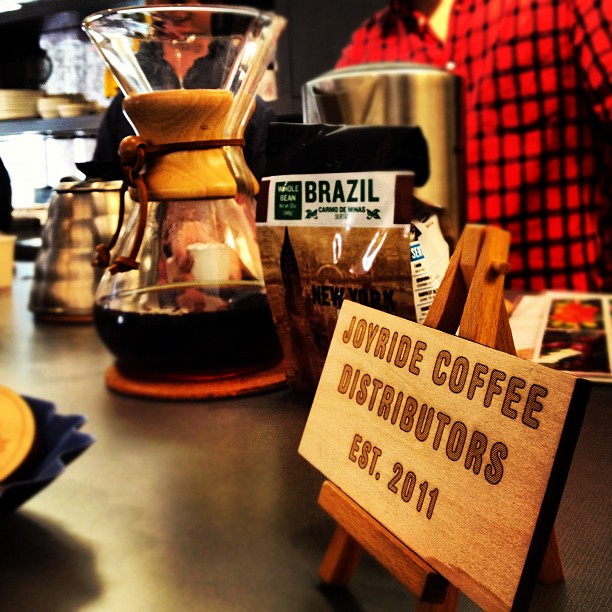



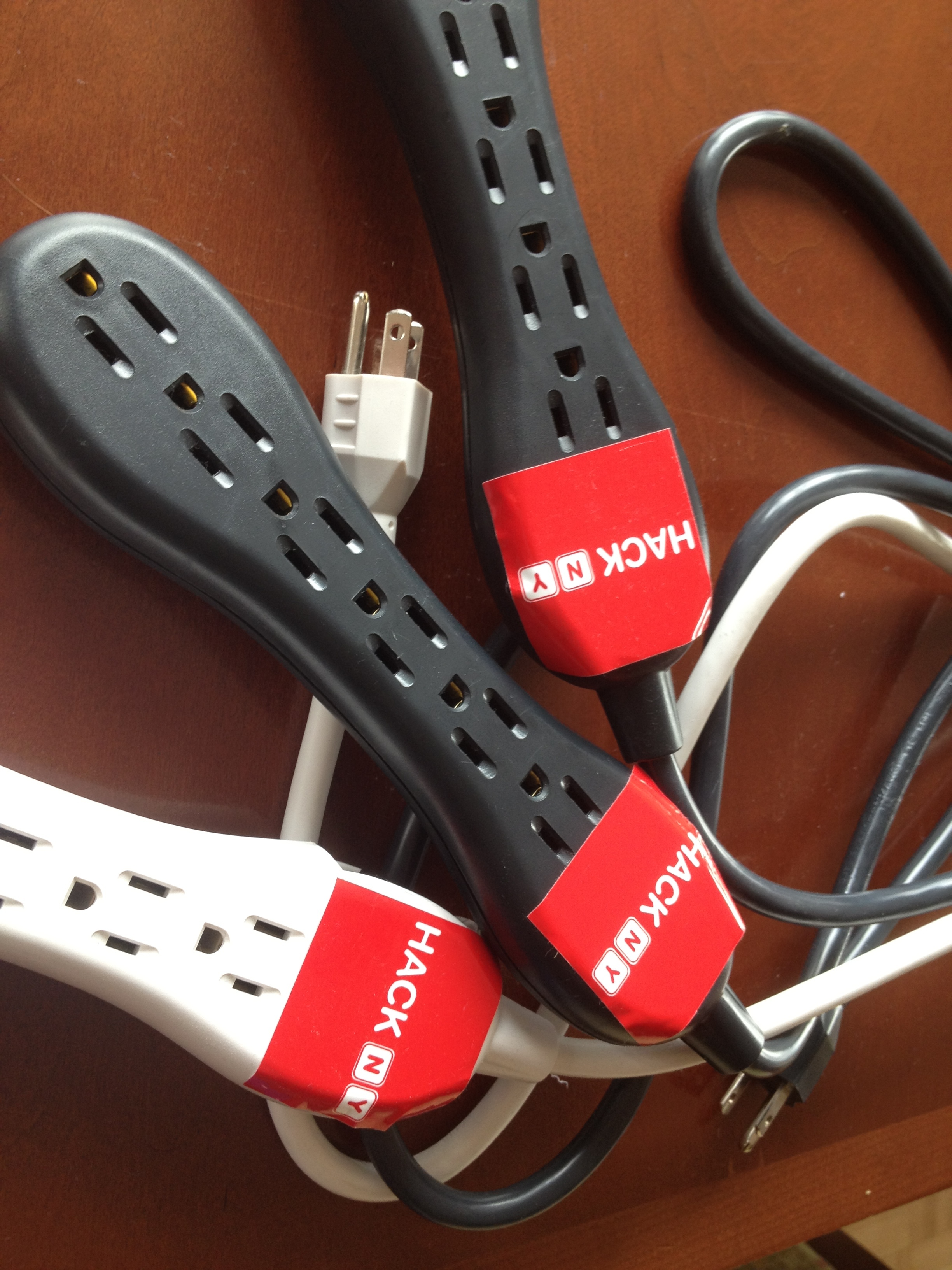
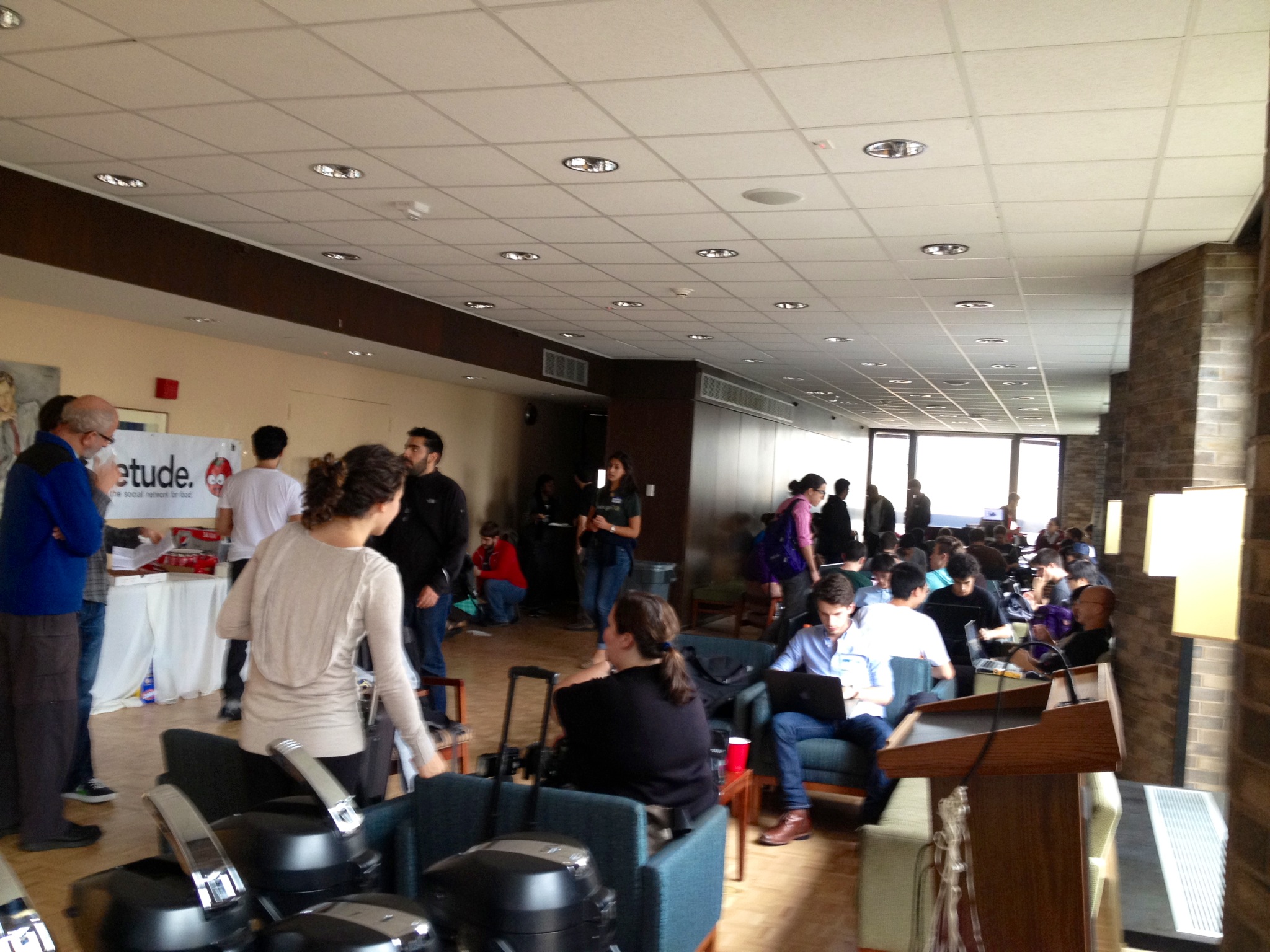
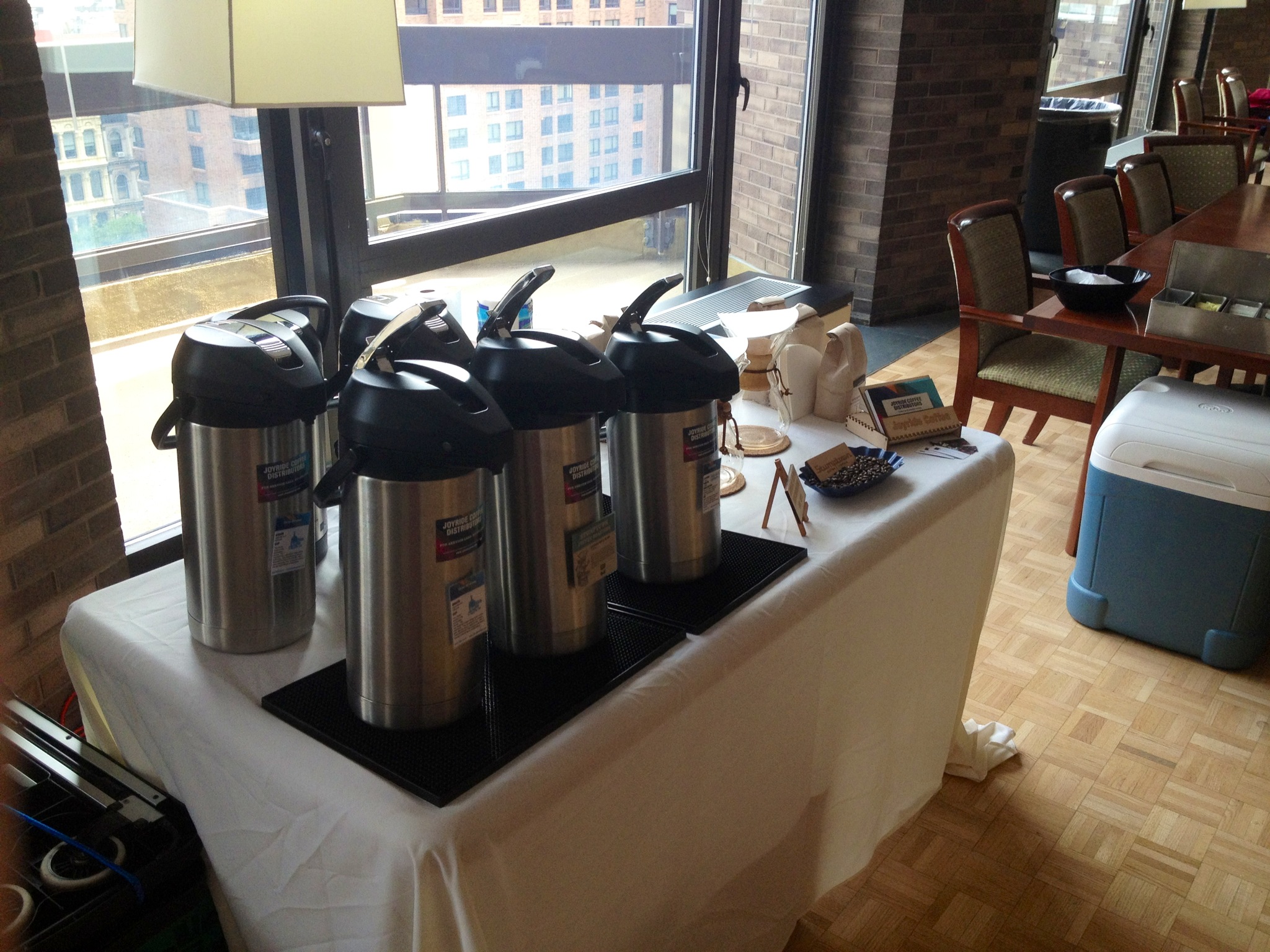
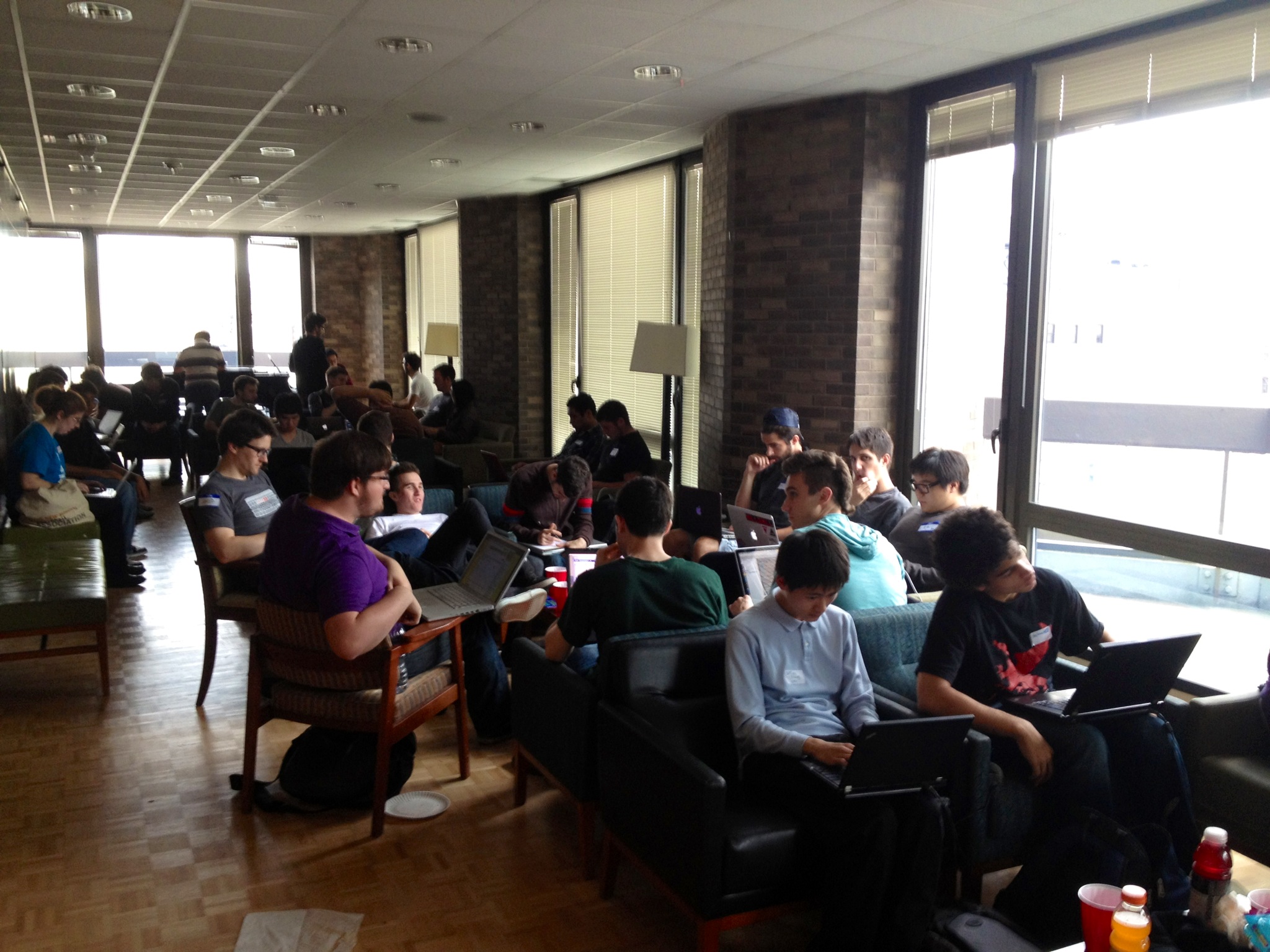
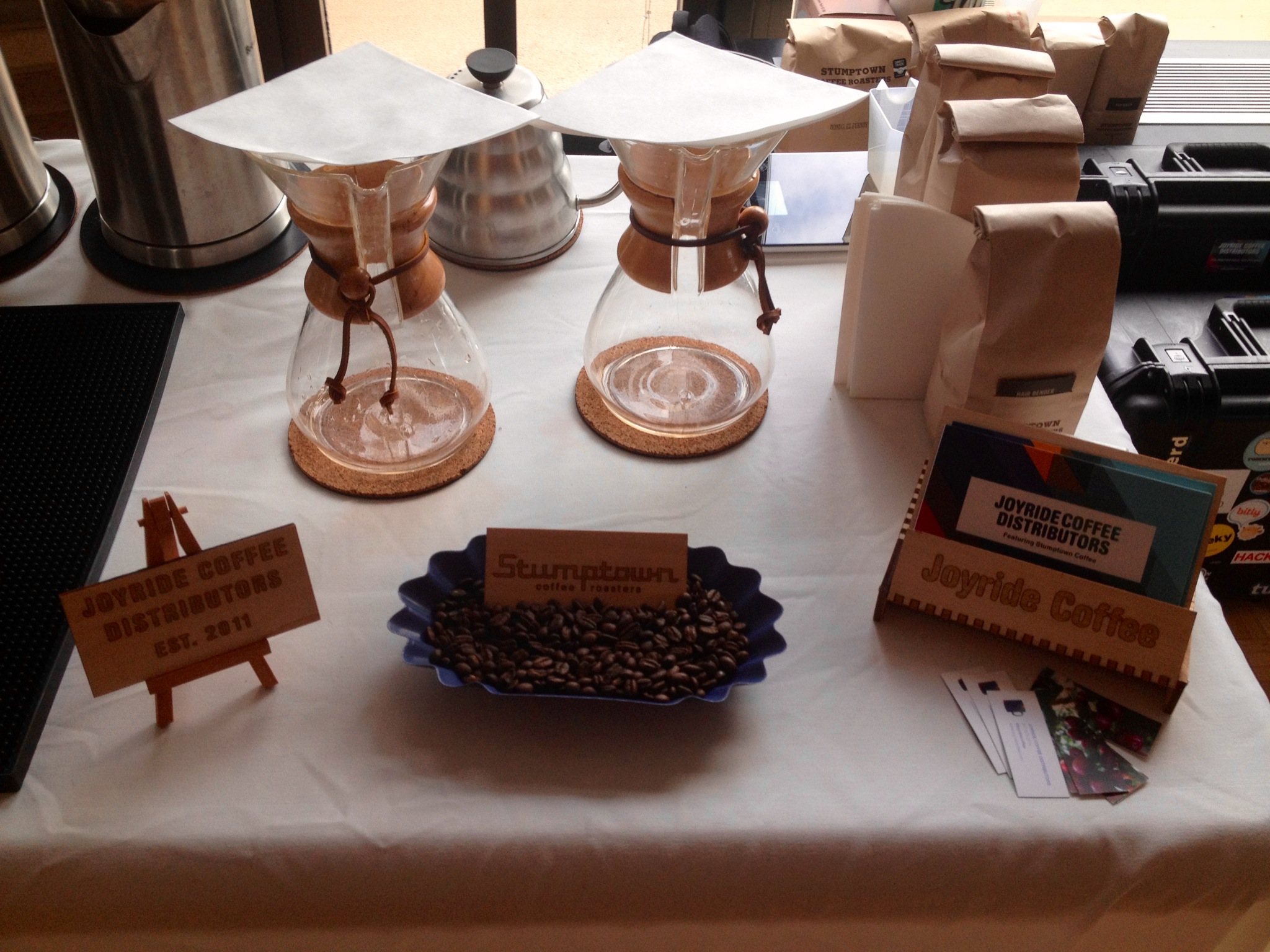
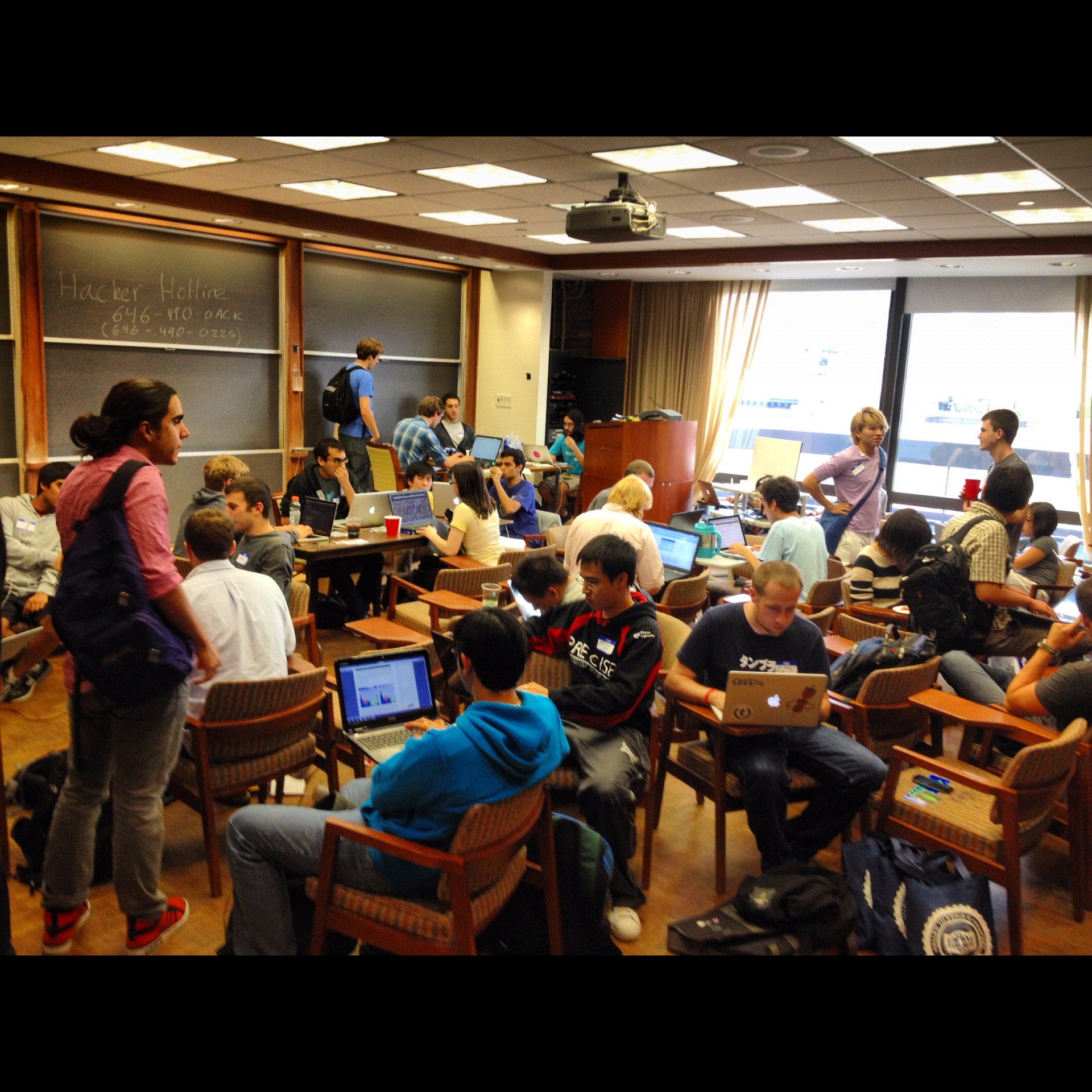


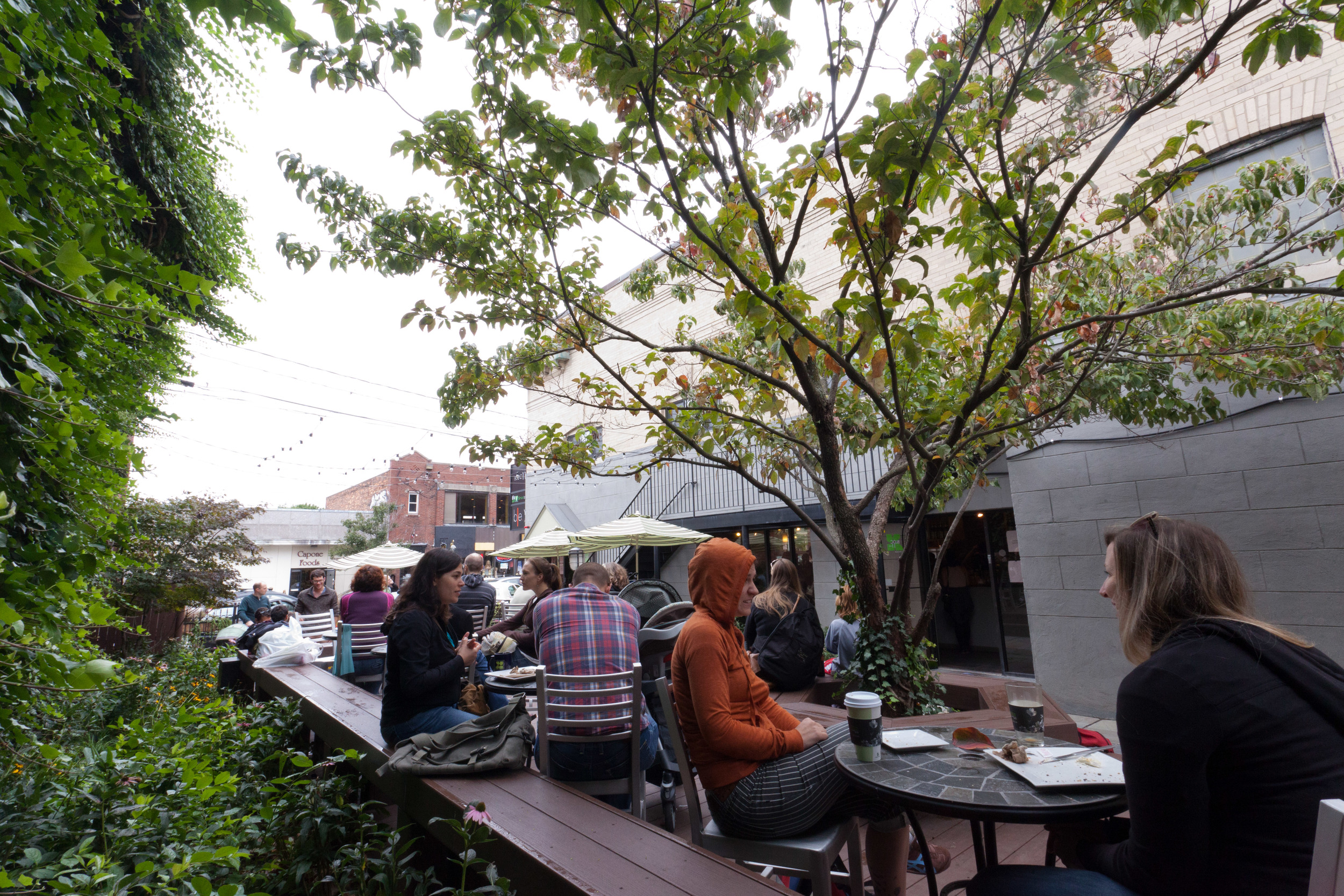



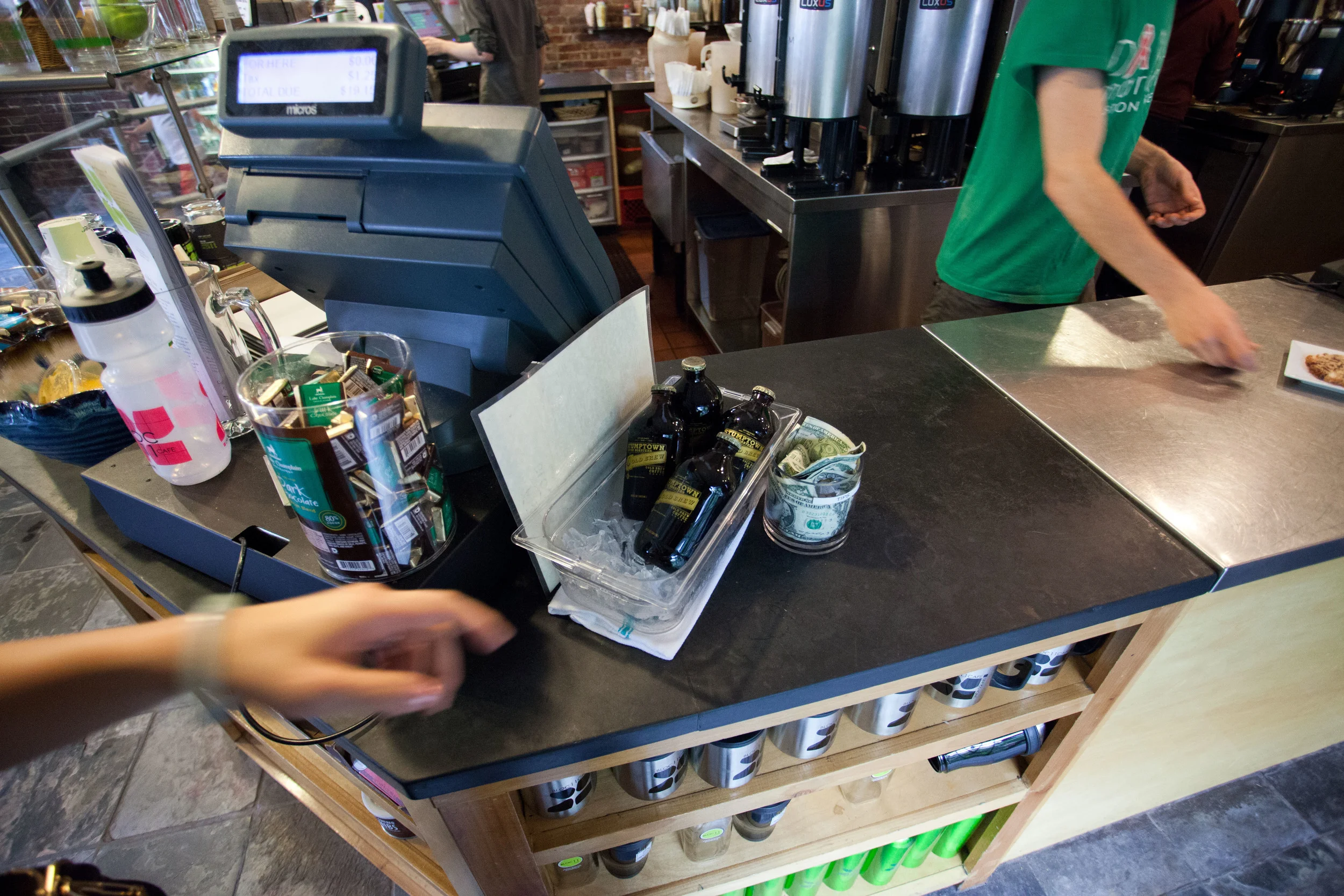

![dirty_coffee_maker[1]](https://images.squarespace-cdn.com/content/v1/5588564ae4b08fd2d8e631f1/1449856962344-W39C6V5V7HFBM6OK70SZ/dirty_coffee_maker1-225x300.jpg)


